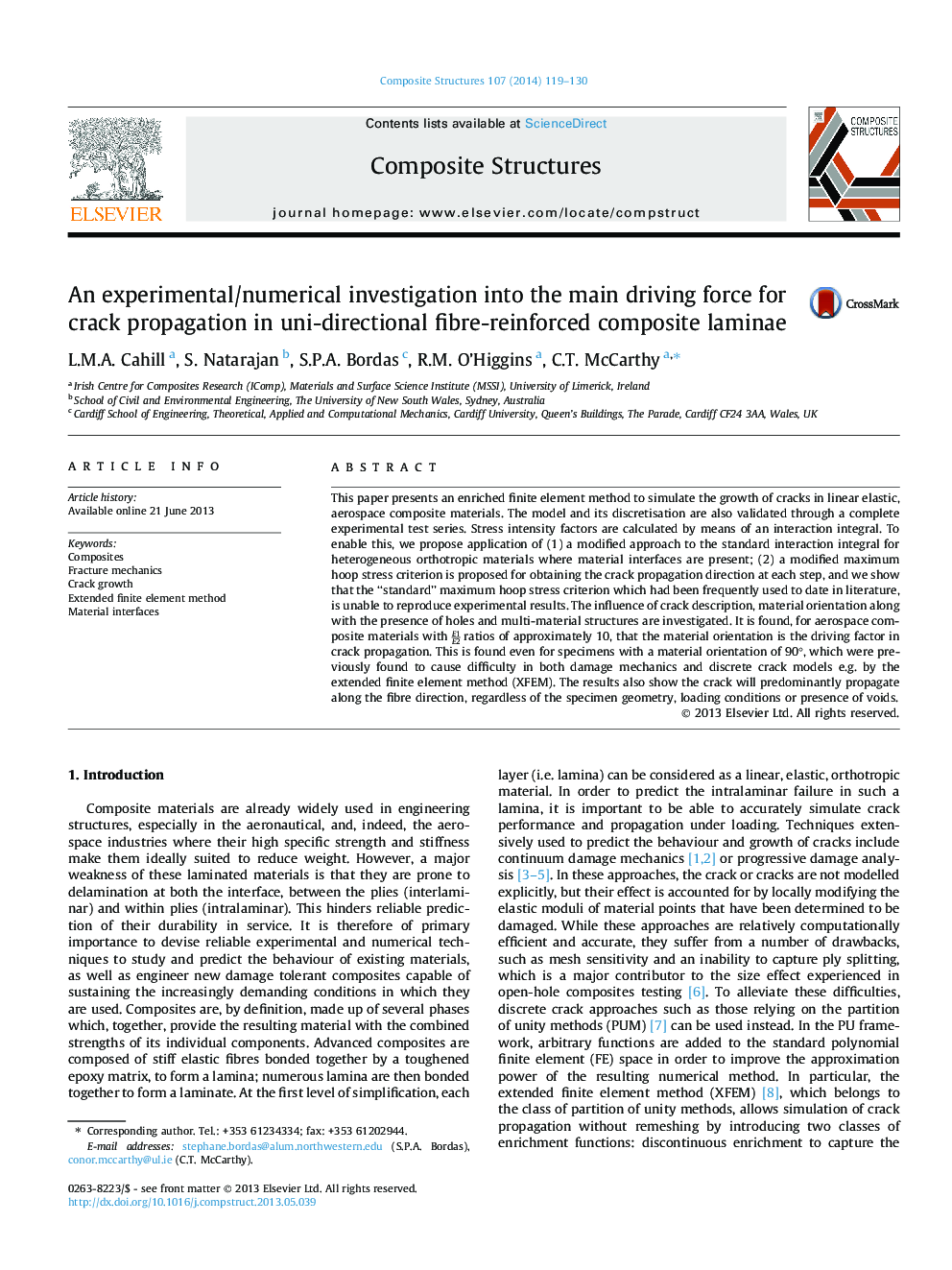| Article ID | Journal | Published Year | Pages | File Type |
|---|---|---|---|---|
| 6708370 | Composite Structures | 2014 | 12 Pages |
Abstract
This paper presents an enriched finite element method to simulate the growth of cracks in linear elastic, aerospace composite materials. The model and its discretisation are also validated through a complete experimental test series. Stress intensity factors are calculated by means of an interaction integral. To enable this, we propose application of (1) a modified approach to the standard interaction integral for heterogeneous orthotropic materials where material interfaces are present; (2) a modified maximum hoop stress criterion is proposed for obtaining the crack propagation direction at each step, and we show that the “standard” maximum hoop stress criterion which had been frequently used to date in literature, is unable to reproduce experimental results. The influence of crack description, material orientation along with the presence of holes and multi-material structures are investigated. It is found, for aerospace composite materials with E1E2 ratios of approximately 10, that the material orientation is the driving factor in crack propagation. This is found even for specimens with a material orientation of 90°, which were previously found to cause difficulty in both damage mechanics and discrete crack models e.g. by the extended finite element method (XFEM). The results also show the crack will predominantly propagate along the fibre direction, regardless of the specimen geometry, loading conditions or presence of voids.
Related Topics
Physical Sciences and Engineering
Engineering
Civil and Structural Engineering
Authors
L.M.A. Cahill, S. Natarajan, S.P.A. Bordas, R.M. O'Higgins, C.T. McCarthy,
